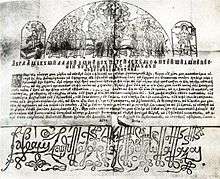Indulgence
In the teaching of the Catholic Church, an indulgence (Latin: indulgentia, from indulgeō, 'permit') is "a way to reduce the amount of punishment one has to undergo for sins".[1] The Catechism of the Catholic Church describes an indulgence as "a remission before God of the temporal punishment due to sins whose guilt has already been forgiven, which the faithful Christian who is duly disposed gains under certain prescribed conditions through the action of the Church which, as the minister of redemption, dispenses and applies with authority the treasury of the satisfactions of Christ and all of the saints".[2]

.jpg)
The recipient of an indulgence must perform an action to receive it. This is most often the saying (once, or many times) of a specified prayer, but may also include the visiting of a particular place, or the performance of specific good works.
Indulgences were introduced to allow for the remission of the severe penances of the early Church and granted at the intercession of Christians awaiting martyrdom or at least imprisoned for the faith.[3] The church teaches that indulgences draw on the treasury of merit accumulated by Christ's superabundantly meritorious sacrifice on the cross and the virtues and penances of the saints.[4] They are granted for specific good works and prayers[4] in proportion to the devotion with which those good works are performed or prayers recited.[5]
By the late Middle Ages indulgences were used to support charities for the public good including hospitals.[6] But the abuse of indulgences, mainly through commercialization, had become a serious problem which the Church recognized but was unable to restrain effectively.[7] Indulgences were, from the beginning of the Protestant Reformation, a target of attacks by Martin Luther and other Protestant theologians. Eventually the Catholic Counter-Reformation curbed the excesses, but indulgences continue to play a role in modern Catholic religious life. Reforms in the 20th century largely abolished the quantification of indulgences, which had been expressed in terms of days or years. These days or years were meant to represent the equivalent of time spent in penance, although it was widely taken to mean time spent in Purgatory. The reforms also greatly reduced the number of indulgences granted for visiting particular churches and other locations.
Catholic teaching
| Part of a series on the |
| Catholic Church |
|---|
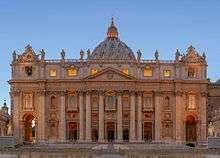 |
| Overview |
|
Miscellaneous
Relations with: |
|
|
"When a person sins, he acquires certain liabilities: the liability of guilt and the liability of punishment."[8] A mortal sin (one that is grave, or serious, in nature and is committed knowingly and freely) is equivalent to refusing friendship with God and communion with the only source of eternal life. The loss of eternal life with God, and the eternal death of hell that is the effect of this rejection, is called the "eternal punishment" of sin. The Sacrament of Penance removes the guilt and the liability of eternal punishment related to mortal sin. "Though your sins are like scarlet, they shall be white as snow; though they are red like crimson, they shall become like wool."[9]
The forgiveness of sin and restoration of communion with God entail the remission of the eternal punishment of sin, but temporal punishment of sin remains. An example of this can be seen in 2 Samuel 12 when after David repents of his sin, the prophet Nathan tells him that he is forgiven but, "Thus says the Lord God of Israel:...Now, therefore, the sword shall never depart from your house, because you have despised me and have taken the wife of Uriah to be your wife."[10]
In addition to this eternal punishment due to mortal sin, every sin, including venial sin, is a turning away from God through what the Catechism of the Catholic Church calls an unhealthy attachment to creatures, an attachment that must be purified either here on earth, or after death in the state called purgatory.[11] "The process of sanctification and interior renewal requires not only forgiveness from the guilt (culpa) of sin, but also purification from the harmful effects or wounds of sin."[12] This purification process gives rise to "temporal punishment", because, not involving a total rejection of God, it is not eternal and can be expiated.
"While patiently bearing sufferings and trials of all kinds and, when the day comes, serenely facing death, the Christian must strive to accept this temporal punishment of sin as a grace. He should strive by works of mercy and charity, as well as by prayer and the various practices of penance, to put off completely the 'old man' and to put on the 'new man."[2]
The temporal punishment that follows sin is thus undergone either during life on earth or in purgatory. In this life, as well as by patient acceptance of sufferings and trials, the necessary cleansing from attachment to creatures may, at least in part, be achieved by turning to God in prayer and penance and by works of mercy and charity.[8] Indulgences (from the Latin verb indulgere meaning to forgive, to be lenient toward)[12] are a help towards achieving this purification.
An indulgence does not forgive the guilt of sin, nor does it provide release from the eternal punishment associated with unforgiven mortal sins. The Catholic Church teaches that indulgences relieve only the temporal punishment resulting from the effect of sin (the effect of rejecting God the source of good), and that a person is still required to have his grave sins absolved, ordinarily through the sacrament of Confession, to receive salvation. Similarly, an indulgence is not a permit to commit sin, a pardon of future sin, nor a guarantee of salvation for oneself or for another.[13] Ordinarily, forgiveness of mortal sins is obtained through Confession (also known as the sacrament of penance or reconciliation).
According to the Catechism of the Catholic Church, "The 'treasury of the Church' is the infinite value, which can never be exhausted, which Christ's merits have before God. They were offered so that the whole of mankind could be set free from sin and attain communion with the Father. ... In Christ, the Redeemer himself, the satisfactions and merits of his Redemption exist and find their efficacy. ...This treasury includes as well the prayers and good works of the Blessed Virgin Mary. They are truly immense, unfathomable, and even pristine in their value before God. In the treasury, too, are the prayers and good works of all the saints, all those who have followed in the footsteps of Christ the Lord and by his grace have made their lives holy and carried out the mission in the unity of the Mystical Body."[2]
Pursuant to the Church's understanding of the power of binding or loosing granted by Christ, it administers to those under its jurisdiction the benefits of these merits in consideration of prayer or other pious works undertaken by the faithful.[3] In opening for individual Christians its treasury, "the Church does not want simply to come to the aid of these Christians, but also to spur them to works of devotion, penance, and charity".[2]
Consistent with this, Peter J. Beer, SJ, writes in Theological Studies:[14]
I believe present Church praxis would benefit if the granting of an indulgence were restricted to a special public ceremony of penitential readings, prayers, etc., at which the bishop in person would bless those wishing to gain the indulgence, after praying over them. It would be helpful, too, if the ceremony were linked to the Eucharistic celebration. In this way the recipient would more likely feel that the full authority of the Body of Christ is supporting him as he carries out the indulgenced work.
Dispositions necessary to gain an indulgence
An indulgence is not the purchase of a pardon which secures the buyer's salvation or releases the soul of another from Purgatory. Sin is only pardoned (i.e., its effects entirely obliterated) when complete reparation in the form of sacramental confession is made and prescribed conditions are followed. After a firm amendment is made internally not to sin again, and the serious execution of one's assigned penance, the release of one from penalty in the spiritual sense consequentially follows.[7]
An indulgence may be plenary (remits all temporal "punishment" required to cleanse the soul from attachment to anything but God) or partial (remits only part of the temporal "punishment", i.e. cleansing, due to sin).[2][15]
To gain a plenary indulgence, upon performing the charitable work or praying the aspiration or prayer for which the indulgence is granted, one must fulfill the prescribed conditions of:
- A complete and whole-hearted detachment from all sin of any kind, even venial sin,
- Making a valid sacramental confession,
- Receiving Holy Communion in the state of grace
- Praying for the intentions of the Pope.[16]
The minimum condition for gaining a partial indulgence is to be contrite in heart; on this condition, a Catholic who performs the work or recites the prayer in question is granted, through the Church, remission of temporal punishment equal to that obtained by the person's own action.[16]
Since those who have died in the state of grace (with all mortal sins forgiven) are members of the communion of saints, the living (members of the Churches Militant) can assist those whose purification from their sins was not yet completed at the time of death through prayer but also by obtaining indulgences in their behalf.[2] Since the Church has no jurisdiction over the dead, indulgences can be gained for them only per modum suffragii, i.e. by an act of intercession.[3] This is sometimes termed impetration, which Aquinas explains "...is not founded on God's justice, but on His goodness".
Present discipline
 |
| Part of a series on the |
| Canon law of the Catholic Church |
|---|
|
Jus antiquum (c. 33-1140)
Jus novum (c. 1140-1563) Jus novissimum (c. 1563-1918) Jus codicis (1918-present) Other |
|
Sacraments
Sacred places
Sacred times |
|
|
Supreme authority, particular churches, and canonical structures Supreme authority of the Church
Supra-diocesan/eparchal structures
|
|
|
Temporal goods (property) |
|
Canonical documents |
|
Procedural law Pars statica (tribunals & ministers/parties)
Pars dynamica (trial procedure)
Election of the Roman Pontiff |
|
Legal practice and scholarship
Academic degrees Journals and Professional Societies Faculties of canon law
Canonists |
|
|
By the apostolic constitution Indulgentiarum doctrina[17] of 1 January 1967, Pope Paul VI, responding to suggestions made at the Second Vatican Council, substantially revised the practical application of the traditional doctrine.[18]
He made it clear that the Church's aim was not merely to help the faithful make due satisfaction for their sins, but chiefly to bring them to greater fervour of charity. For this purpose he decreed that partial indulgences, previously granted as the equivalent of a certain number of days, months, quarantines (forty-day periods) or years of canonical penance, simply supplement, and to the same degree, the remission that those performing the indulgenced action already gain by the charity and contrition with which they do it.[3]
The abolition of the classification by years and days made it clearer than before that repentance and faith are required not only for remission of eternal punishment for mortal sin but also for remission of temporal punishment for sin. In Indulgentiarum doctrina Pope Paul VI wrote that indulgences cannot be gained without a sincere conversion of outlook and unity with God.[19]
In the same bull, Pope Paul ordered that the official list of indulgenced prayers and good works, called the Raccolta, be revised "with a view to attaching indulgences only to the most important prayers and works of piety, charity and penance".[20] The Raccolta was replaced with the Enchiridion Indulgentiarum. While a number of indulgenced prayers and good works were removed from the list, it now includes new general grants of partial indulgences that apply to a wide range of prayerful actions, and it indicates that the prayers that it does list as deserving veneration on account of divine inspiration or antiquity or as being in widespread use are only examples[21] of those to which the first of these general grants applies: "Raising the mind to God with humble trust while performing one's duties and bearing life's difficulties, and adding, at least mentally, some pious invocation".[22] In this way, the Enchiridion Indulgentiarum, in spite of its smaller size, classifies as indulgenced an immensely greater number of prayers than were treated as such in the Raccolta.
Canons 992-997 of the 1983 Code of Canon Law provide a general regulation of indulgences.
Actions for which indulgences are granted
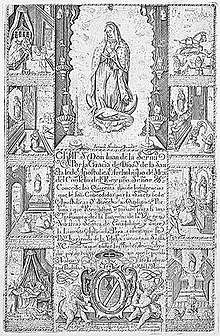
Partial indulgences
There are four general grants of indulgence, which are meant to encourage the faithful to infuse a Christian spirit into the actions of their daily lives and to strive for perfection of charity. These indulgences are partial, and their worth therefore depends on the fervour with which the person performs the recommended actions:
- Raising the mind to God with humble trust while performing one's duties and bearing life's difficulties, and adding, at least mentally, some pious invocation.
- Devoting oneself or one's goods compassionately in a spirit of faith to the service of one's brothers and sisters in need.
- Freely abstaining in a spirit of penance from something licit and pleasant.
- Freely giving open witness to one's faith before others in particular circumstances of everyday life.[16]
Plenary indulgences
Among the particular grants, which, on closer inspection, will be seen to be included in one or more of the four general grants, especially the first, the Enchiridion Indulgentiarum draws special attention[16] to four activities for which a plenary indulgence can be gained on any day, though only once a day:
- Piously reading or listening to Sacred Scripture for at least half an hour.[16]
- Adoration of Jesus in the Eucharist for at least half an hour.[16]
- The pious exercise of the Stations of the Cross.[16]
- Recitation of the Rosary or the Akathist in a church or oratory, or in a family, a religious community, an association of the faithful and, in general, when several people come together for an honourable purpose.[16]
A plenary indulgence may also be gained on some occasions, which are not everyday occurrences. They include but are not limited to:
- Receiving, even by radio or television, the blessing given by the Pope Urbi et Orbi (to the city of Rome and to the world) or that which a bishop is authorized to give three times a year to the faithful of his diocese.[16]
- Taking part devoutly in the celebration of a day devoted on a world level to a particular religious purpose.[16] Under this heading come the annual celebrations such as the World Day of Prayer for Vocations, and occasional celebrations such as World Youth Day.[23][24]
- Taking part for at least three full days in a spiritual retreat.[16]
- Taking part in some functions during the Week of Prayer for Christian Unity.[16]
Special indulgences are also granted on occasions of particular spiritual significance such as a jubilee year[25] or the centenary or similar anniversary of an event such as the apparition of Our Lady of Lourdes.[26]
The prayers specifically mentioned in the Enchiridion Indulgentiarum are not of the Latin Church tradition alone, but also from the traditions of the Eastern Catholic Churches, such as the Akathistos, Paraklesis, Evening Prayer, and Prayer for the Faithful Departed (Byzantine), Prayer of Thanksgiving (Armenian), Prayer of the Shrine and the Lakhu Mara (Chaldean), Prayer of Incense and Prayer to Glorify Mary the Mother of God (Coptic), Prayer for the Remission of Sins and Prayer to Follow Christ (Ethiopian), Prayer for the Church, and Prayer of Leave-taking from the Altar (Maronite), and Intercessions for the Faithful Departed (Syrian).
Of particular significance is the plenary indulgence attached to the Apostolic Blessing that a priest is to impart when giving the sacraments to a person in danger of death, and which, if no priest is available, the Church grants to any rightly disposed Christian at the moment of death, on condition that that person was accustomed to say some prayers during life. In this case the Church itself makes up for the three conditions normally required for a plenary indulgence: sacramental confession, Eucharistic communion and prayer for the Pope's intentions.[16]
Coronavirus plenary indulgences
On 20 March 2020, the Apostolic Penitentiary issued three plenary indulgences. The first indulgence is for victims of COVID-19 and those helping them. The actions that the indulgence is attached to include praying the rosary, the Stations of the Cross, or at least praying the Creed, Lord's Prayer, and a Marian prayer. The second indulgence is for those who make an offering for an end to the pandemic. The offering must be either a visit to the Eucharist, Eucharistic adoration, Rosary, Stations of the Cross, Chaplet of the Divine Mercy, or reading the Bible for half an hour. The third plenary indulgence is for the victims of COVID-19 at their hour of death.[27][28] The Penitentiary took the extraordinary step of loosening the requirements regarding sacramental Communion and Confession, due to the impossibility of carrying them out in a timely fashion during lockdowns and suspension of liturgies in the pandemic.[29]
History
Early and medieval beliefs
In the early church, especially from the third century on, ecclesiastic authorities allowed a confessor or a Christian awaiting martyrdom to intercede for another Christian in order to shorten the other's canonical penance.[3] During the Decian persecution, many Christians obtained signed statements (libelli) certifying that they had sacrificed to the Roman gods in order to avoid persecution or confiscation of property. When these lapsi later wished to once again be admitted to the Christian community, some of the lapsi presented a second libellus purported to bear the signature of some martyr or confessor who, it was held, had the spiritual prestige to reaffirm individual Christians. Bishop Cyprian of Carthage insisted that none of the lapsi be admitted without sincere repentance.[30]
The Council of Epaone in 517 witnesses to the rise of the practice of replacing severe canonical penances with a new milder penance: its 29th canon reduced to two years the penance that apostates were to undergo on their return to the Church, but obliged them to fast one day in three during those two years, to come to church and take their place at the penitents' door, and to leave with the catechumens. Any who objected to the new arrangement was to observe the much longer ancient penance.[31]
The sixth century saw the development in Ireland of Penitentials, handbooks for confessors in assigning penance. The Penitential of Cummean counseled a priest to take into consideration in imposing a penance, the penitent's strengths and weaknesses. Some penances could be commuted through payments or substitutions. It became customary to commute penances to less demanding works, such as prayers, alms, fasts and even the payment of fixed sums of money depending on the various kinds of offenses (tariff penances). While the sanctions in early penitentials, such as that of Gildas, were primarily acts of mortification or in some cases excommunication, the inclusion of fines in later compilations derive from secular law.[32]
By the tenth century, some penances were not replaced but merely reduced in connection with pious donations, pilgrimages, and similar meritorious works. Then, in the 11th and 12th centuries, the recognition of the value of these works began to become associated not so much with canonical penance but with remission of the temporal punishment due to sin. A particular form of the commutation of penance was practiced at the time of the Crusades when the confessor required the penitent to go on a Crusade in place of some other penance.[33] The earliest record of a plenary indulgence was Pope Urban II's declaration at the Council of Clermont (1095) that he remitted all penance incurred by crusaders who had confessed their sins in the Sacrament of Penance, considering participation in the crusade equivalent to a complete penance.[34]
Theologians looked to God's mercy, the value of the Church's prayers, and the merits of the saints as the basis on which indulgences could be granted. Around 1230 the Dominican Hugh of St-Cher proposed the idea of a "treasury" at the Church's disposal, consisting of the infinite merits of Christ and the immeasurable abundance of the saints' merits, a thesis that was demonstrated by great scholastics such as Albertus Magnus and Thomas Aquinas and remains the basis for the theological explanation of indulgences.[33]
Indulgences were intended to offer remission of the temporal punishment due to sin equivalent to that someone might obtain by performing a canonical penance for a specific period of time. As Purgatory became more prominent in Christian thinking, the idea developed that the term of indulgences related to remission of time in Purgatory. Indeed, many Late Medieval indulgences were for terms well over a human lifetime, reflecting this belief. For several centuries it was debated by theologians whether penance or purgatory was the currency of the indulgences granted, and the church did not settle the matter definitively, for example avoiding doing so at the Council of Trent.[35] The modern view of the church is that the term is penance.
Late Medieval usage
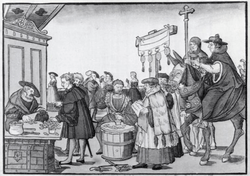
Indulgences became increasingly popular in the Middle Ages as a reward for displaying piety and doing good deeds, though, doctrinally speaking, the Church stated that the indulgence was only valid for temporal punishment for sins already forgiven in the Sacrament of Confession. The faithful asked that indulgences be given for saying their favourite prayers, doing acts of devotion, attending places of worship, and going on pilgrimage; confraternities wanted indulgences for putting on performances and processions; associations demanded that their meetings be rewarded with indulgences. Good deeds included charitable donations of money for a good cause, and money thus raised was used for many causes, both religious and civil; building projects funded by indulgences include churches, hospitals, leper colonies, schools, roads, and bridges.[33]
However, in the later Middle Ages growth of considerable abuses occurred. Some commissaries sought to extract the maximum amount of money for each indulgence.[36] Professional "pardoners"[3] (quaestores in Latin) - who were sent to collect alms for a specific project - practiced the unrestricted sale of indulgences. Many of these quaestores exceeded official Church doctrine, and promised rewards like salvation from eternal damnation in return for money. With the permission of the Church, indulgences also became a way for Catholic rulers to fund expensive projects, such as Crusades and cathedrals, by keeping a significant portion of the money raised from indulgences in their lands.[33] There was a tendency to forge documents declaring that indulgences had been granted.[33] Indulgences grew to extraordinary magnitude, in terms of longevity and breadth of forgiveness.
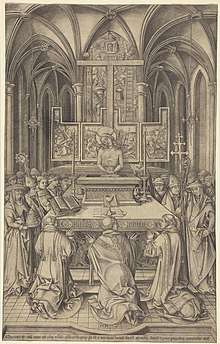
The Fourth Lateran Council (1215) suppressed some abuses connected with indulgences, spelling out, for example, that only a one-year indulgence would be granted for the consecration of churches and no more than a 40-days indulgence for other occasions. The Council also stated that "Catholics who have girded themselves with the cross for the extermination of the heretics, shall enjoy the indulgences and privileges granted to those who go in defense of the Holy Land."[38]
Very soon these limits were widely exceeded. False documents were circulated with indulgences surpassing all bounds: indulgences of hundreds or even thousands of years.[33] In 1392, more than a century before Martin Luther published the Ninety-five Theses, Pope Boniface IX wrote to the Bishop of Ferrara condemning the practice of certain members of religious orders who falsely claimed that they were authorized by the pope to forgive all sorts of sins, and obtained money from the simple-minded faithful by promising them perpetual happiness in this world and eternal glory in the next.[7] The "Butter Tower" of Rouen Cathedral earned its nickname because the money to build it was raised by the sale of indulgences allowing the use of butter during Lent.[39]
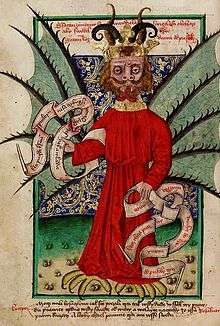
An engraving by Israhel van Meckenem of the Mass of Saint Gregory contained a "bootlegged" indulgence of 20,000 years; one of the copies of this plate (not the one illustrated, but also from the 1490s) was altered in a later state to increase it to 45,000 years. The indulgences applied each time a specified collection of prayers - in this case seven each of the Creed, Our Father, and Hail Mary - were recited in front of the image.[40] The image of the Mass of Saint Gregory had been especially associated with large indulgences since the jubilee year of 1350 in Rome, when it was at least widely believed that an indulgence of 14,000 years had been granted for praying in the presence of the Imago Pietatis ("Man of Sorrows"), a popular pilgrimage destination in the basilica of Santa Croce in Gerusalemme in Rome.[41]
Protestant Reformation
The scandalous conduct of the "pardoners" was an immediate occasion of the Protestant Reformation.[3] In 1517, Pope Leo X offered indulgences for those who gave alms to rebuild St. Peter's Basilica in Rome. The aggressive marketing practices of Johann Tetzel in promoting this cause provoked Martin Luther to write his Ninety-five Theses, condemning what he saw as the purchase and sale of salvation. In Thesis 28 Luther objected to a saying attributed to Tetzel: "As soon as a coin in the coffer rings, a soul from purgatory springs".[42] The Ninety-five Theses not only denounced such transactions as worldly but denied the Pope's right to grant pardons on God's behalf in the first place: the only thing indulgences guaranteed, Luther said, was an increase in profit and greed, because the pardon of the Church was in God's power alone.[43]
This oft-quoted saying was by no means representative of the official Catholic teaching on indulgences, but rather, more a reflection of Tetzel's capacity to exaggerate. Yet if Tetzel overstated the matter in regard to indulgences for the dead, his teaching on indulgences for the living was pure. German Catholic historian of the Papacy, Ludwig von Pastor explains:[44]
Above all, a most clear distinction must be made between indulgences for the living and those for the dead.
As regards indulgences for the living, Tetzel always taught pure doctrine. The assertion that he put forward indulgences as being not only a remission of the temporal punishment of sin, but as a remission of its guilt, is as unfounded as is that other accusation against him, that he sold the forgiveness of sin for money, without even any mention of contrition and confession, or that, for payment, he absolved from sins which might be committed in the future. His teaching was, in fact, very definite, and quite in harmony with the theology of the Church, as it was then and as it is now, i.e., that indulgences "apply only to the temporal punishment due to sins which have been already repented of and confessed"....
The case was very different with indulgences for the dead. As regards these there is no doubt that Tetzel did, according to what he considered his authoritative instructions, proclaim as Christian doctrine that nothing but an offering of money was required to gain the indulgence for the dead, without there being any question of contrition or confession. He also taught, in accordance with the opinion then held, that an indulgence could be applied to any given soul with unfailing effect. Starting from this assumption, there is no doubt that his doctrine was virtually that of the drastic proverb:
- “As soon as money in the coffer rings, the soul from purgatory's fire springs."
The Papal Bull of indulgence gave no sanction whatever to this proposition. It was a vague scholastic opinion, rejected by the Sorbonne in 1482, and again in 1518, and certainly not a doctrine of the Church, which was thus improperly put forward as dogmatic truth. The first among the theologians of the Roman court, Cardinal Cajetan, was the enemy of all such extravagances, and declared emphatically that, even if theologians and preachers taught such opinions, no faith need be given them. "Preachers," said he, "speak in the name of the Church only so long as they proclaim the doctrine of Christ and His Church; but if, for purposes of their own, they teach that about which they know nothing, and which is only their own imagination, they must not be accepted as mouthpieces of the Church. No one must be surprised if such as these fall into error."
While Luther did not deny the Pope's right to grant pardons for penance imposed by the Church, he made it clear that preachers who claimed indulgences absolved those who obtained them from all punishments and granted them salvation were in error, in agreement with Catholic theology.[45]
Council of Trent
On 16 July 1562, the Council of Trent suppressed the office of quaestores and reserved the collection of alms to two canon members of the chapter, who were to receive no remuneration for their work; it also reserved the publication of indulgences to the bishop of the diocese.[46] Then on 4 December 1563, in its final session, the Council addressed the question of indulgences directly, declaring them "most salutary for the Christian people", decreeing that "all evil gains for the obtaining of them be wholly abolished", and instructing bishops to be on the watch for any abuses concerning them.[47]
A few years later, in 1567, Pope Pius V canceled all grants of indulgences involving any fees or other financial transactions.[48][49]
After the Council of Trent, Clement VIII established a commission of Cardinals to deal with indulgences according to the mind of the Council. It continued its work during the pontificate of Paul V and published various bulls and decrees on the matter. But only Clement IX established a true Congregation of Indulgences (and Relics) with a Brief of 6 July 1669. In a motu proprio on 28 January 1904, Pius X joined the Congregation of Indulgences with that of Rites, but with the restructuring of the Roman Curia in 1908 all matters regarding indulgences were assigned to the Holy Inquisition. In a motu proprio on 25 March 1915, Benedict XV transferred the Holy Inquisition's Section for Indulgences to the Apostolic Penitentiary, but maintained the Holy Inquisition's responsibility for matters regarding the doctrine of indulgences.
Eastern Orthodox Church
The Eastern Orthodox Churches believe one can be absolved from sins by the Sacred Mystery of Confession. Because of differences in the theology of salvation, indulgences for the remission of temporal punishment of sin do not exist in Eastern Orthodoxy, but until the twentieth century there existed in some places a practice of absolution certificates (συγχωροχάρτια – synchorochartia).
Some of these certificates were connected with any patriarch's decrees lifting some serious ecclesiastical penalty, including excommunication, for the living or the dead. But because of the expense of maintaining the Holy Places and paying the many taxes levied on them, the Greek Orthodox Patriarch of Jerusalem, with the approval of the Ecumenical Patriarch of Constantinople, had the sole privilege of distributing such documents in large numbers to pilgrims or sending them elsewhere, sometimes with a blank space for the name of the beneficiary, living or dead, an individual or a whole family, for whom the prayers would be read.
Greek Orthodox Patriarch of Jerusalem Dositheos Notaras (1641–1707) wrote: "It is an established custom and ancient tradition, known to all, that the Most Holy Patriarchs give the absolution certificate (συγχωροχάρτιον – synchorochartion) to the faithful people … they have granted them from the beginning and still do."[50]
Indeed, starting from the 16th century, Orthodox Christians of the Greek Church rather extensively, although not officially in penitential practice, used “permissive letters” (Greek: συγχωροχάρτια), in many ways similar to indulgences. The status of an official ecclesiastical document is obtained at the Council of Constantinople in 1727, the resolution of which reads: «The power of the abandonment of sins, which, if filed in writing, which the Eastern Church of Christ calls “permissive letters”, and the Latin people “indulgences”... is given by Christ in the holy Church. These “permissive letters” are issued throughout the catholic (universal) Church by the four holiest patriarchs: Constantinople, Alexandria, Antioch, and Jerusalem». The practice of using "permissive letters" existed in Greece until the middle of the twentieth century. From XIII to XVII century, it was used in Russia. Indulgences as a means of enrichment were condemned at the Council of Constantinople in 1838. Even conciliar decisions were difficult to eradicate the practice of indulgences, rooted in the people. "Permissive letters" (or indulgences) survived in Greece until the mid-twentieth century[51][52][53][54]
See also
- Pardon of Assisi
- Merit
References
Citations
- Peters, Edward (2008). A Modern Guide to Indulgences: Rediscovering This Often Misinterpreted Teaching. p. 13. ISBN 9781595250247.
- "Catechism of the Catholic Church - IntraText". www.vatican.va.
- Cross, F. L., ed. The Oxford Dictionary of the Christian Church. New York: Oxford University Press. 2005, article indulgences
- Wetterau, Bruce. World history. New York: Henry Holt and company. 1994.
- "Indulgentiarum doctrina, chapter 5 and norm 5".
- David Michael D'Andrea (2007). Civic Christianity in Renaissance Italy: The Hospital of Treviso, 1400-1530. University Rochester Press. pp. 15–. ISBN 978-1-58046-239-6.
- Kent, William. "Indulgences." The Catholic Encyclopedia Vol. 7. New York: Robert Appleton Company, 1910. 9 July 2019

- "Primer on Indulgences - Catholic Answers". www.catholic.com.
- "The New American Bible - IntraText". www.vatican.va.
- "The New American Bible - IntraText". www.vatican.va.
- CCC §1472.
- Peters, p.1.
- "Myths about Indulgences". Catholic Answers. Archived from the original on 2012-09-04. Retrieved 2012-04-27.
- Beer, SJ, Peter J. (1967). "What Price Indulgences? Trent and Today" (PDF). Theological Studies. 67: 526–535.
- "Indulgentiarum doctrina, norm 2".
- "Enchiridion Indulgentiarum quarto editur". www.vatican.va.
- "Pope Paul VI. Indulgentiarum doctrina, January 1, 1967".
- The encyclopedia of Christianity, Volume 2 by Erwin Fahlbusch 2001 ISBN 90-04-11695-8 page 695
- Indulgentiarum doctrina, §11.
- Indulgentiarum doctrina, norm 13
- Enchiridion Indulgentiarum, Aliae concessiones, Proœmium, 2
- Enchiridion Indulgentiarum, Concessiones, I
- "Plenary Indulgence". World Youth Day 2008. 2008. Archived from the original on 2 September 2007. Retrieved 2 November 2019.
- O'Donoghue, Ben (15 October 2007). "World Youth Day 2008, Cairns, Queensland, Australia". Catholic Diocese of Cairns. Archived from the original on 6 December 2007. Retrieved 2 November 2019.
- "The Great Jubilee Indulgence". Ewtn.com. Archived from the original on 28 May 2019. Retrieved 2 November 2019.
- Stafford, Cardinal James Francis (21 November 2007). Girotti, Gianfranco (ed.). "Grant of indulgence on the occasion of the 150th apparition of the Blessed Virgin Mary at Lourdes". Vatican.va. Retrieved 2 November 2019.
- Vatican.Va, Decree of the Apostolic Penitentiary on the granting of special Indulgences to the faithful in the current pandemic, 20.03.2020: The gift of special Indulgences is granted to the faithful suffering from COVID-19 disease, commonly known as Coronavirus, as well as to health care workers, family members and all those who in any capacity, including through prayer, care for them
- Fr. Benedict Mayaki, SJ (20 March 2020). "Church grants special indulgence to coronavirus patients and caregivers". Vatican News. Retrieved 23 March 2020.
- "Here's How You Can Get the Vatican's New Coronavirus Indulgences". National Catholic Register. Retrieved 2020-03-27.
- Chapman, John. "St. Cyprian of Carthage." The Catholic Encyclopedia Vol. 4. New York: Robert Appleton Company, 1908. 2 November 2016
- Richard, Charles-Louis (February 8, 1823). "Bibliothèque sacrée, ou Dictionnaire universel, historique, dogmatique, canonique, géographique et chronologique des sciences ecclésiastiques: contenant l'histoire de la religion, de son établissement et de ses dogmes; celle de l'Eglise considérée dans sa discipline, ses rits, cérémonies et sacremens; la Théologie dogmatique et morale, la décision des cas de conscience et l'ancien Droit canon; les personnages saints et autres de l'ancienne et de la nouvelle loi; les papes, les Conciles, les Sièges épiscopaux de toute la chrétienté, et l'ordre chronologique de leurs prélats; enfin l'histoire des ordres militaires et religieux, des schismes et des hérésies". Méquignon – via Google Books.
- Davies, Oliver; O'Loughlin, Thomas (February 8, 1999). "Celtic Spirituality". Paulist Press – via Google Books.
- "Library: The Historical Origin of Indulgences".
- Cross, F. L., ed. The Oxford Dictionary of the Christian Church. New York: Oxford University Press. 2005, article plenary indulgence
- Lea, pp. 88-91
- Kirsch, Johann Peter (1911). "The Reformation". The Catholic Encyclopedia. 12. Transcribed for New Advent by Marie Jutras. New York: Robert Appleton Company. Retrieved 23 September 2010.
- Shestack, 214
- "Internet History Sourcebooks Project". sourcebooks.fordham.edu.
- Soyer, Alexis (1977) [1853]. The Pantropheon or a History of Food and its Preparation in Ancient Times. Wisbech, Cambs.: Paddington Press. p. 172. ISBN 0-448-22976-5.
- Parshall, 58 (quoted), and Shestack, 214 (illustrated in both).
- Schiller, G (1972). Iconography of Christian Art, Vol. II (English trans from German). London: Lund Humphries. pp. 199–200. ISBN 0853313245.
- Thesis 55 of Tetzel's One Hundred and Six Theses. These "Anti-theses" were a reply to Luther’s Ninety-five Theses and were drawn up by Tetzel’s friend and former Professor, Konrad Wimpina. Theses 55 & 56 (responding to Luther's 27th Theses) read: "For a soul to fly out, is for it to obtain the vision of God, which can be hindered by no interruption, therefore he errs who says that the soul cannot fly out before the coin can jingle in the bottom of the chest." In, The reformation in Germany, Henry Clay Vedder, 1914, Macmillan Company, p. 405. Books.google.com Animam purgatam evolare, est eam visione dei potiri, quod nulla potest intercapedine impediri. Quisquis ergo dicit, non citius posse animam volare, quam in fundo cistae denarius possit tinnire, errat. In: D. Martini Lutheri, Opera Latina: Varii Argumenti, 1865, Henricus Schmidt, ed., Heyder and Zimmer, Frankfurt am Main & Erlangen, vol. 1, p. 300. (Reprinted: Nabu Press, 2010, ISBN 1-142-40551-6 ISBN 9781142405519). Books.google.com See also: Catholic Encyclopedia: Johann Tetzel
- Certum est, nummo in cistam tinniente augeri questum et avariciam posse: suffragium autem ecclesie est in arbitrio dei solius (Thesis 28).
- Ludwig von Pastor, The History of the Popes, from the Close of the Middle Ages, Ralph Francis Kerr, ed., 1908, B. Herder, St. Louis, Volume 7, pp. 347-348. Books.google.com
- Errant itaque indulgentiarum predicatores ii, qui dicunt per pape indulgentias hominem ab omni pena solvi et salvari (Thesis 21).
- "CT21".
- "CT25".
- "CATHOLIC ENCYCLOPEDIA: Indulgences". www.newadvent.org.
- "Myths About Indulgences." Catholic Answers. Retrieved 16 Apr. 2008 Myths about indulgences Archived 2012-09-04 at the Wayback Machine
- Δοσίθεος Νοταρᾶς, Ἱστορία περὶ τῶν ἐν Ἱεροσολύμοις πατριαρχευσάντων, Bucharest 1715, p. 88
- Sergey Govorun/ ИНДУЛЬГЕНЦИИ В ИСТОРИИ ГРЕЧЕСКОЙ ЦЕРКВИ (INDULGENCES IN THE HISTORY OF THE GREEK CHURCH)
- Orthodox Encyclopedia/ Article «Indulgence» («Индульгенция»)
- Гидулянов, Павел Васильевич. / Загробная жизнь, как предмет спекуляции, или индульгенции в римско-католической и греко-православной церкви / П. В. Гидулянов. - М.; Рязань : Атеист, 1930. - 176 с. /Глава 8. Прощенные грамоты или индульгенции восточных патриархов в России и спекуляция ими в до-петровский период. / С. 157-172
- «Δέκατον τρίτον, ἐξουσίαν ὑπὲρ τῆς ἀφέσεως τῶν ἁμάρτιον ἢν ἐγγράφως διδομένην τοῖς εὐσεβέσιν ἡ μέν Ἀνατολική συγχωροχάρτια, Λατῖνοι δέ ταῦτα καλοῦσιν ιντουλγκέντζας, ομολογείν δίδοσθαι μεν παρά Χριστού εν τη αγία Εκκλησία, και την αυτών χρήσιν τοις πιστοίς σωτηριωτάτην είναι καταφυγήν, δίδοσθαι μέντοι τα τοιαύτα συγχωροχάρτια εν όλη τη Καθολική Εκκλησία και παρά των τεσσάρων αγιωτάτων Πατριαρχών, του Κωνσταντινουπόλεως, του Αλεξανδρείας, του Αντιοχείας και του Ιεροσολύμων.» -Καθηγητή Ιωάννη Καρμίρη, «Δογματικά και Συμβολικά Μνημεία της Ορθοδόξου Καθολικής Εκκλησίας», τομ. 2, Αυστρία 1968, σελ. 867-868
Sources

- Lea, Henry Charles, A History of Auricular Confession and Indulgences in the Latin Church, 1896, Lea Bros., Philadelphia, Online at archive.org
- Parshall, Peter, in David Landau & Peter Parshall, The Renaissance Print, Yale, 1996, ISBN 0-300-06883-2
- Shestack, Alan; Fifteenth Century Engravings of Northern Europe; 1967, National Gallery of Art, Washington (Catalogue), LOC 67-29080
Further reading
- Sacred Apostolic Penitentiary (Vatican); Enchiridion of Indulgences: Norms and Grants, trans. by William T. Barry from the Second Rev. Ed. of the Enchiridion indulgentiarum ... with English Supplement; 1969, Catholic Book Publishing Co. N.B.: "Originally published by Libreria Editrice Vaticana, 1968." Without ISBN
- Peters, Edward. A Modern Guide to Indulgences: Rediscovering This Often Misinterpreted Teaching, Hillenbrand Books, Mundelein, Illinois, 2008 ISBN 978-1-59525-024-7
External links
| Look up indulgence in Wiktionary, the free dictionary. |
| Wikimedia Commons has media related to Indulgences. |
- Indulgence sales in the Middle Ages (Confessional Lutheran perspective)
- Pope Paul VI: Apostolic Constitution Indulgentiarum Doctrina whereby the Revision of Sacred Indulgences is Promulgated, 1 January 1967
- Code of Canon Law (1983) concerning Indulgences
- Enchiridion Indulgentiarum, 4th edition, 1999 (Latin) (English translation: Manual of Indulgences, published by the United States Conference of Catholic Bishops, ISBN 1-57455-474-3)
- English translation of Enchiridion Indulgentiarum, 3rd edition (1986)
- Pope John Paul II: General Audience talk on indulgences, 29 September 1999
- Catechism of the Catholic Church: "Indulgences"
- Enrico dal Covolo: The Historical Origin of Indulgences
- Paul S. Czarnota: Indulgences
- Myths about Indulgences
